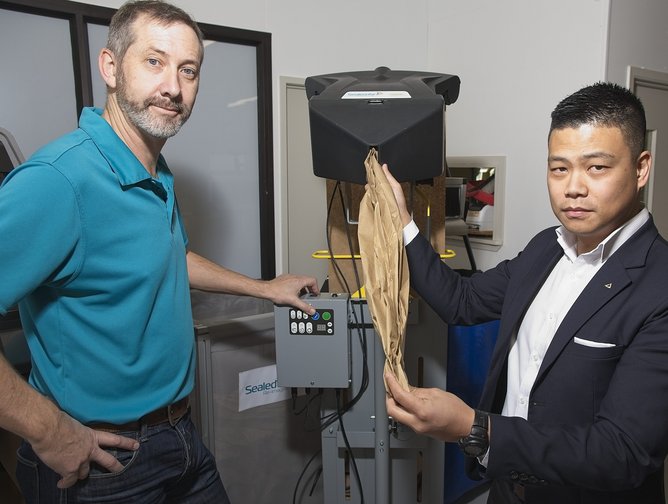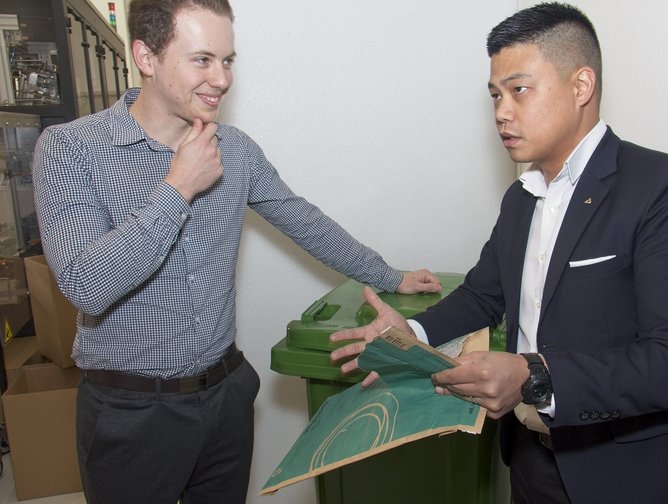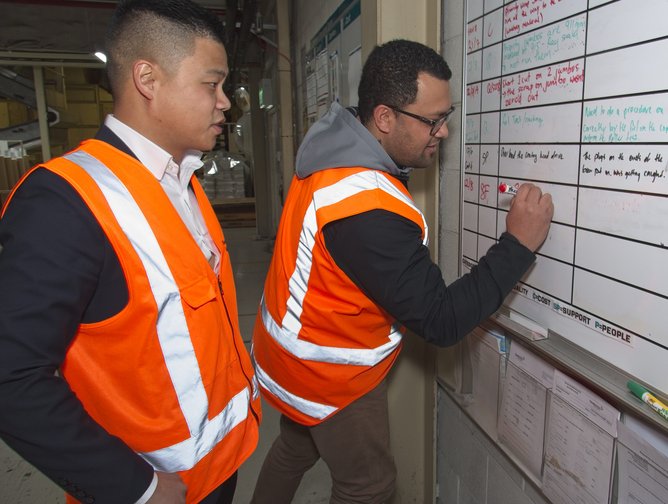Sealed Air’s genesis came in a moment of accidental innovation back in 1957. Two engineers, Alfred Fielding and Marc Chavannes, in Hawthorne, New Jersey, attempted to create a new wall covering by laminating two plastic sheets with air bubbles in between. Although their invention never caught on as interior decoration, it was later discovered as the perfect material for protecting items, starting the pop culture legacy commonly known as bubble wrap. Fast forward to the present day, and Sealed Air’s mission has grown to help businesses succeed across the packaging space in both the food and brand protection markets.
“The underlying theme for Sealed Air today is to pick up on the sustainability pillars within the industries we serve,” explains Michael Basagre, NZ 3PL and Fulfilment Sector Leader. Our team specialises in reducing damages, cube optimisation, fulfilment velocity and enhancing the overall customer experience through better packaging design. Our innovation has always been driven by the market and the customers. As a result, today’s technology has evolved around those key drivers, challenging us to re-invent how we interact with packaging, whether that be ensuring products of all shapes and sizes arrive safely to its destination or reducing food waste such as meat, fish and produce to achieve a longer shelf life.” Basagre says these innovations range from tabletop devices capable of making packaging on demand such as bubblewrap, to large, fully automated, IoT-enabled machines that require little to no human interaction. “It’s a wide spectrum, depending on the industry and the particular customer that it might be appealing to,” he adds.
The big challenge for Sealed Air is to continue to meet the changing needs of customers. “With the continued rise of e-commerce, the consumer is now demanding, if not already conditioned to more convenience, such as same day delivery, free shipping and more eco-friendly or sustainable packaging,” says Basagre. “That wave of customer influence is driving us back to the heart of the supply chain to reinvent how retailers and warehouses package their orders with the customer in mind. We’re trying to break the traditional mentality of the warehousing and fulfilment centres we deal with. There has been a focus on traditional processes when it comes to packaging, especially in the logistics industry here in New Zealand. However, as the demands of customers increase such as same day delivery, so too does the pressure to fulfil those orders, which means non-value-added activity in the supply chain must be carefully reviewed with a more customer centric approach.”
Basagre believes customers are now choosing retailers and brands who share the same forward-thinking ethos. “In particular, the solutions we are seeing today, that are really taking off are in that sustainability area.” he says. “Businesses choose Sealed Air because our solutions match their values as a company. My role has traditionally been focused on the backend of that supply chain where packaging meets a person packing an order, but with the rise of sustainability, e-commerce and enhanced customer experience, my role has very much shifted towards a more holistic view, a view that connects the person packing the order with the customer receiving the order.
“I now focus on ensuring that the packaging benefits everyone across the supply chain process, and that means being responsible for communicating all the health and safety benefits of our solutions as well as how it will help drive brand awareness and loyalty for a retailer,” Basagre continues. “For example, say a customer orders a fragile item that is prone to getting damaged, a packer will aim to protect that order by using traditional bubble wrap. The process may look like this: the packer goes to a bulky storage area to cut and collect this traditional bubble wrap before taking it back to the pack bench to wrap around three to four times around the fragile order before taping and placing into a carton. However, this process can be improved by one of our machines that produces bubble wrap on demand, called New Air iB. This means it can easily eliminate the unnecessary process of walking to cut and collect bulky bubble wrap, and because our film is perforated there is no need for a knife, add to the fact that this on-demand Bubblewrap is much stronger than traditional bubble wrap meaning less layers are required to achieve the same amount of protection.
“Overall this improved process reduces the manual aspect found in traditional bubble wrap, by improving the packer’s performance and eliminating the potential health and safety risks such as knife cuts or fatigue,” says Basagre. “Now, when the customer receives their order, they are now receiving packaging that is sufficient for the product it is protecting, meaning it’s not over packed. And, because it was packed much more quickly, the customer has a better chance of getting their order in time, enhancing the unboxing experience and the overall customer experience with the retailer.” Such streamlining strikes the right note for sustainability targets as, from a purely packaging perspective, Sealed Air’s innovation is focused on helping businesses reduce the amount of packaging they use without compromising on integrity as per the example provided by Basagre.
Sealed Air’s approach to reverse logistics is also addressing the waste hierarchy, while keeping the company on target to meet its sustainability goals with materials used on demand. “Many of our protective packaging materials can be reused,” confirms Basagre, highlighting the ability to use the same packaging for product returns via the supply chain or re-forwarding orders to other destinations. “What we’re also seeing in the B2B supply chain is this active awareness to reuse our packaging materials instead of disposing them. Most of these solutions are strong enough to be used multiple times in that supply chain whether that is return logistics or reusing for new order.”
This commitment to reuse is echoed in Sealed Air’s partnership with Soft Plastics, a New Zealand recycling initiative. “We provide financial assistance around drop-off points so that they can recycle a lot of our soft plastics – our clear mailer bags, bubble wrap bags and protective packaging plastics can be put back through the system to be regrinded, reprocessed, and reused to make other plastics. In this particular case, here in New Zealand, it's being transformed into plastic fence posts by an innovative company called Future Post” says Basagre. “Future post in particular is aiming to replace traditional timber fence posts found in the agriculture industry by converting the plastics into post, which means they minimise plastics ending up in landfill.” Sealed Air also works with Astron Plastics, which regrinds plastic material for much of the New Zealand market. “We send our off cuts to Astron and they reprocess it for us to purchase back, in which we are then able to re-use in our own processing plant here in Auckland,” he says. “We're trying to ensure we have that closed-loop process as we aim for a more circular economy.”
Sealed Air carried out a survey back in 2014 around ecommerce and online orders, and found that 58% of consumers are more conscious about packaging materials than they were five years previously. Meanwhile, 77% of consumers believe that packaging should reflect a retailer's environmental values. Basagre says the study’s insights drove many back-of-house changes. “Part of my role is to link, the front-of-house with the back-of-house operations and make sure retailers are aware of what their packaging is reflecting to their customers and market. I’m finding more and more that retailers are looking for environmentally friendly or more sustainable packaging to meet the growing concern of their customers and the market they serve. Along with helping connect packaging with people, my role is to also help educate and ensure that decisions on packaging materials or processes involving packaging are made with as much information as possible, and that often includes advising decision makers on the trade-offs such as any extra costs, changes to packing process, performance of the packaging materials and of course the environmental impact. I believe it is equally important to understand these trade-offs as much as it is about choosing the right packaging material. What I am finding more and more of is - if the packaging material is too hard to recycle, or the packaging is perceived to not be environmentally friendly, then the chances of it being put through the correct recycling system becomes less likely. I’ve experienced that people are motivated to do the right thing, if its accessible and easy to do.”
Sealed Air’s 2025 Sustainability and Plastics Pledge sets ambitious goals for recycling, showing the company is keen to lead by working towards innovative packaging solutions that are 100% recyclable or reusable. The challenge is to eliminate plastic waste and achieve a target of 50% average recycled content across all packaging solutions, 60% of which is post-consumer recycled content. Stressing the difficulty of this, Basagre warns: “If we can't get post-consumer plastics through the supply chain, then there will be no raw materials for us to recycle.”
Collaboration is key to drive educational awareness in the sustainability area, he believes. “The everyday consumer is wanting to do their part to help reduce waste, let alone eliminate plastics waste. So, it’s important that we also focus on recycling and reducing as well continuing to investigate and develop more alternative options. We need to bring to light that not all plastics are evil and not one packaging material is best fit for every application. For example, if we can extend the shelf life of red meat using Sealed Air’s proven Cryovac packaging material, and enable that piece of meat to see another day and increase its chances of being purchased and consumed rather than thrown away, then that to me is being more sustainable. Or, if we can prevent fragile items from getting damaged by focusing on packaging performance, such as stronger protective bubble wrap, then the chances of that order turning up in one piece improves drastically, whereas if the wrong packaging material was used and it ended up getting damaged then that’s the worst sustainable outcome that could happen because now you have to re-send, re-deliver and re-package that order which is then contributing to the carbon footprint.
“Yes, the rise of more eco-friendly packaging is increasing and currently it tends to gravitate towards paper-based options, but it is also important to remember the purpose of the packaging material and the application,” Basagre states. “The great thing is we have both plastic and paper alternatives to help provide brands and customers the choice based on values and purpose. What’s really interesting is protective paper packaging was once thought of as a dying breed. It’s great that they are trending now because it means consumers are more likely to recycle paper, which means our paper-based solutions are empowering consumers to recycle more often. At the end of the day sustainable packaging doesn’t have a silver bullet, but it does have good intentions and we are for discussing, informing and collaborating on the best packaging solutions”.
Looking to the future, Basagre can see automation becoming more accessible to the New Zealand market, and not just for the big guys. “SMEs are reaching out to us to try and future proof their businesses. We're having more conversations now around how to use technology to build their business, grow their customer base by getting orders out the door more quickly, and become more sustainable. I'm seeing a breakdown in the mindset that automation in the packaging space is exclusive to larger customers. It’s great to see they are getting over the mental hump that they can transform their business using this technology without the burden of having to be the a large player to access this technology, instead, they can see that our technology could actually help enable them to become the next large retailer, which is great to see.”








